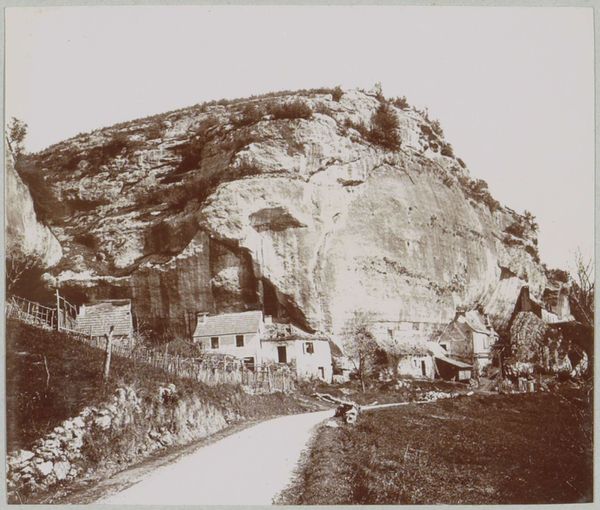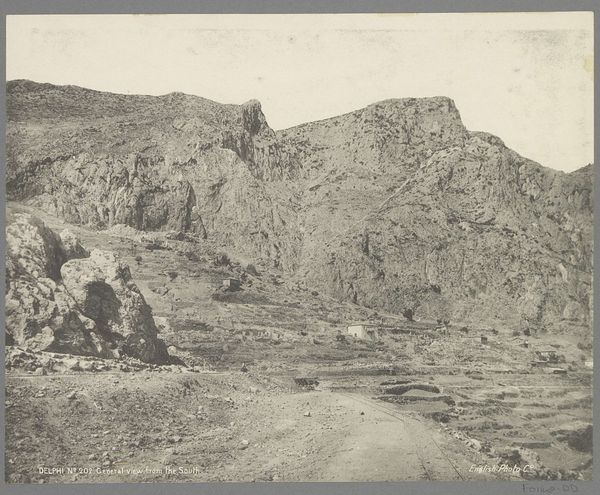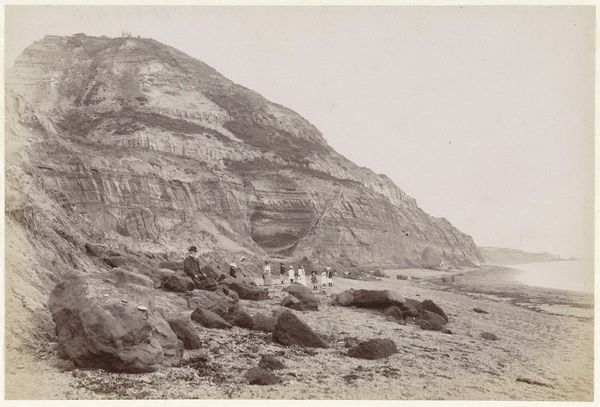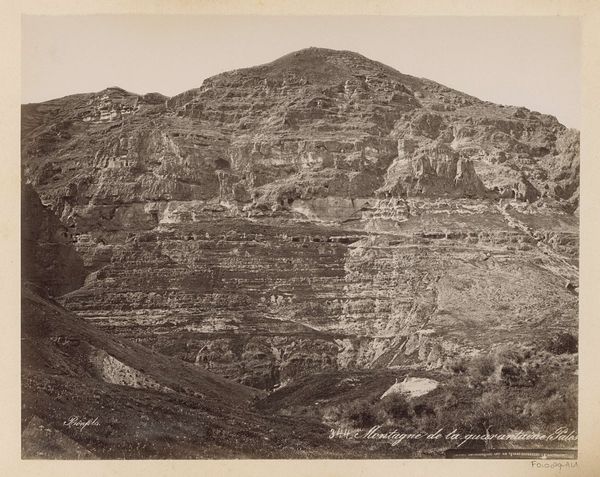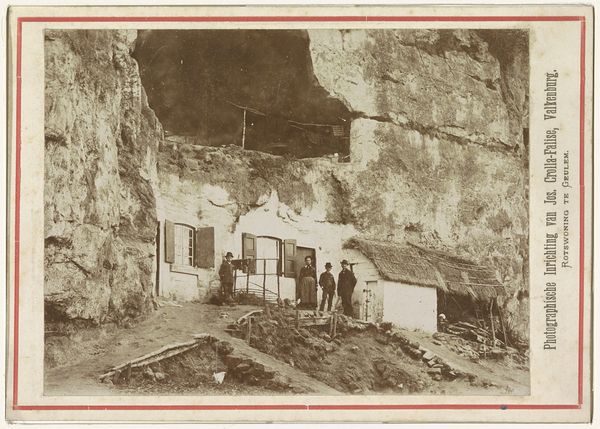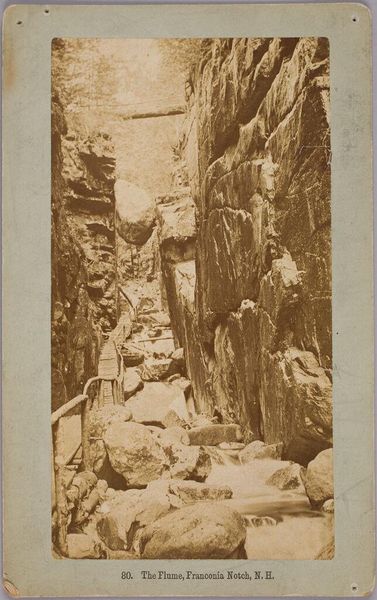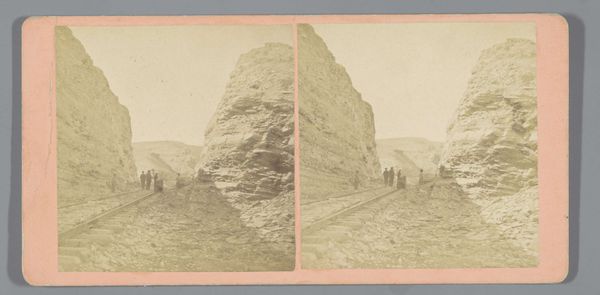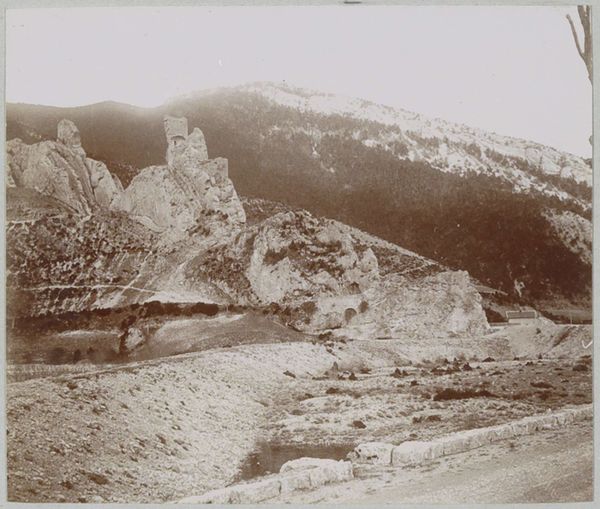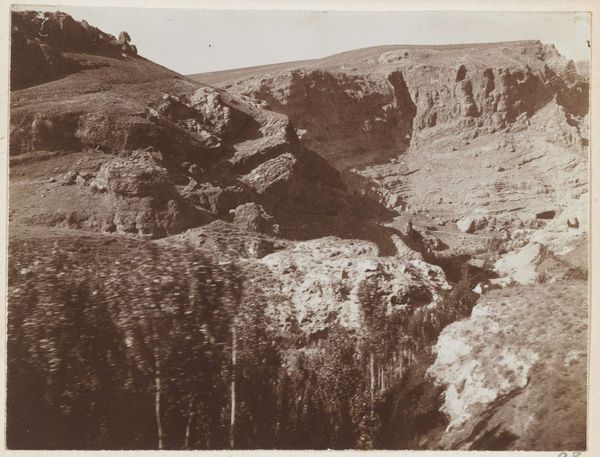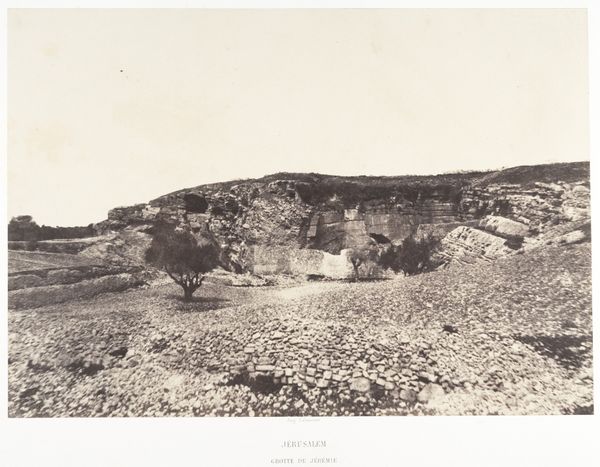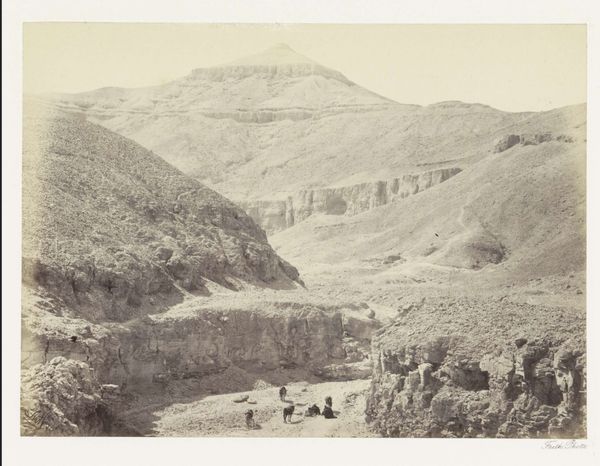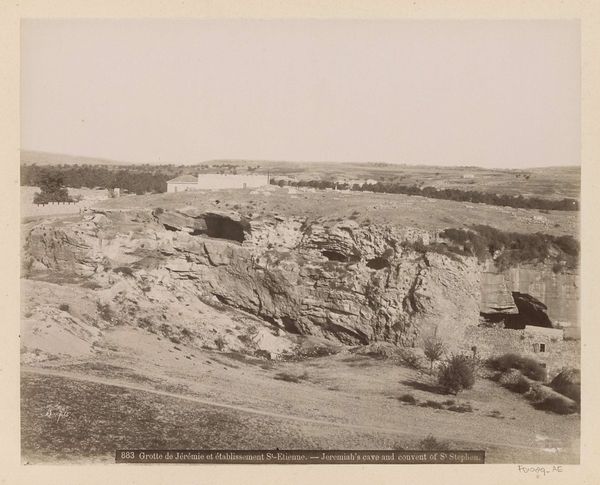
Reisgezelschap bij een hut langs de weg in een kloof in Perzië c. 1880 - 1895
0:00
0:00
photography
#
landscape
#
photography
#
orientalism
Dimensions: height 165 mm, width 222 mm
Copyright: Rijks Museum: Open Domain
Curator: Welcome to this remarkable photographic print, "Travelers by a hut along the road in a ravine in Persia," created by Antoine Sevruguin, circa 1880 to 1895. Editor: My immediate sense is one of starkness, the monumental rock formation really dominates. The monochromatic tones contribute to a sense of aridity and perhaps, a certain quiet drama. Curator: It is worth noting the composition; Sevruguin masterfully positions his subjects at the base of this geological giant, emphasizing the scale of the landscape in relation to the human figures. This speaks to an "orientalist" aesthetic prevalent during this era. Editor: Yes, the staging is key. The framing invites a critical view of how cultures perceived and depicted 'the Other.' These travelers seem passively posed, almost consumed by the vast landscape. Does this contribute to or challenge prevailing stereotypes of people from this region? Are they simply props within a colonial narrative about "exotic" lands? Curator: From a formal perspective, the tonal range, varying from light gray to almost black, allows Sevruguin to model the geological forms with remarkable fidelity. The textural contrast between the rough rock face and the softer fabrics of the travelers' clothing further enriches the visual experience. Editor: However, let's consider those figures. They’re not just textural elements. Their clothing and activities denote their identity and socio-economic context, hinting at journeys, perhaps forced migration. Understanding the social stratification of the time enriches this seemingly placid landscape. Curator: I see the figures as integral compositional components. Note how their placement balances the dark void of the hut’s entrance, creating a visual equilibrium. Editor: But equilibrium, especially in art, can conceal imbalances of power. Sevruguin, as a photographer, held a particular authority in how he chose to represent these people and their environment. We must view these images within the framework of imperialism. Curator: Indeed, analyzing this photograph allows us to understand more than its formal components, doesn’t it? It provides us the opportunity to consider these crucial questions. Editor: It encourages dialogue about history and representation, reminding us of the complex and multifaceted interpretations inherent in all visual artifacts.
Comments
No comments
Be the first to comment and join the conversation on the ultimate creative platform.
